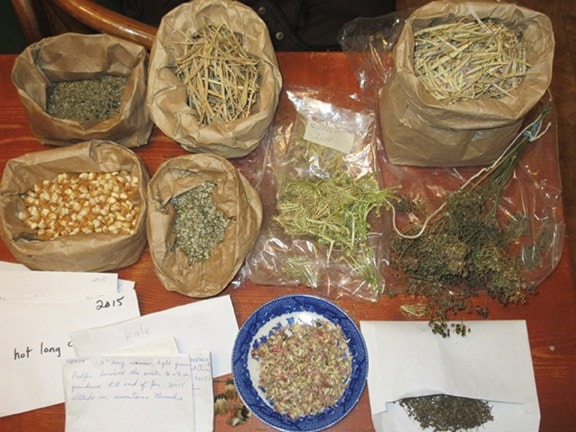With so many varieties of seed available commercially some gardeners may wonder why they should bother saving their own, but there is good reason to. Successive generations of plants adapt to their region so the seeds we save will grow better plants each year. Saving your own is simple and costs nothing, so you might as well give it a try.
Besides, multinational agriculture corporations have been lobbying our government to make seed collection illegal, presumably so they can control the world’s food supply. This could put regional seed companies out of business, with seed that has adapted to particular garden climate and soil conditions available only to those who save their own.
I have been saving my own seed for the last five years and wish I had started sooner. Did I mention how easy it is? Since annuals like tomatoes, squash, peas and beans produce seed the same year they’re planted, they are easiest. Wait until they’re dead ripe before harvesting the fruit, then dry the seed and put it into packets. Tomato seeds need to ferment in a bit of water for a couple of days before you dry them out since the fermentation process kills off pathogens.
Biennials like carrots, beets and onions should be moved to a bed separate from the rest of the garden at the end of the first year since it’s easier to tend them when they’re grouped together. Carefully dig up the best specimens and transplant them to the new bed in late fall, mid-winter or very early spring and they should produce seed by the end of that summer.
Some perennials like garlic and asparagus also produce seed that can be saved and replanted. Garlic is a little complicated so I will deal with it in a later column, but I have let asparagus go to seed in its bed. These take a few years to grow into food producing plants but I figure it’s worth a try. With organic asparagus at $10 a pound what have I got to lose?
Stored seeds last longest in cool, dry conditions. I put mine into quart-sized jars with a packet of desiccant in each one, labeled the first and 15th of each month of the growing season, and I put in each jar all the packets of seeds that should be sown on those dates. When the time comes I just look into the jar and sow what’s in there, then move the ones that need re-sowing in a few weeks to the next jar.
Seeds can often remain viable for several years and there are usually more than one needs, so if anyone is interested in swapping their surplus, email me at mary_lowther@yahoo.ca. For more information on this critical subject, Seeds of Diversity Canada has published a manual titled: How To Save Your Own Seeds, and there’s a wealth of information on the Internet that my granddaughter showed me how to find.
